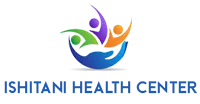Dry Needling Therapy Here in Fort Lee, NJ

Dry needling therapy is a technique used by chiropractors like Fort Lee's Ishitani Health Center doctors, physical therapists, and sports medicine practitioners, to treat muscular pain and dysfunction. It involves the insertion of thin needles into trigger points, which are tight knots or bands of muscle fibers that can cause pain and restrict movement.
Here are some key points about dry needling therapy:
Technique: Dry needling therapy involves the use of thin, solid needles, similar to acupuncture needles. However, the approach and underlying principles of dry needling differ from traditional Chinese acupuncture.
Trigger points: Dry needling targets trigger points, which are areas of tight muscle fibers that are painful when pressed or cause referred pain in other areas of the body. These trigger points can develop due to muscle overuse, injury, poor posture, or stress.
Mechanism of action: The exact mechanisms of how dry needling works are not yet fully understood. However, it is believed to stimulate the nervous system, leading to a local twitch response in the muscle. This response helps relax the muscle fibers, improve blood flow, and release substances that promote healing.
Pain relief and muscle function: Dry needling aims to alleviate pain and improve muscle function by releasing muscle tension and reducing muscle tightness. By targeting trigger points, it can help relieve muscle spasms, increase range of motion, and restore proper muscle activation patterns.
Conditions treated: Dry needling therapy is commonly used to address various musculoskeletal conditions, including but not limited to myofascial pain syndrome, muscle strains, tension headaches, neck and back pain, tendinitis, and sports-related injuries.
Integration with other therapies: Dry needling is often used as part of a comprehensive treatment approach, which may include other therapies such as manual therapy, exercise, and rehabilitation techniques. It can be combined with other modalities to optimize outcomes and address underlying causes of pain or dysfunction.
It's worth noting that dry needling therapy should be performed by a qualified healthcare professional who has undergone specific training in the technique. This ensures safe and effective application, as well as proper evaluation and management of the patient's condition. If you're considering dry needling therapy, contact Ishitani Health Center.






